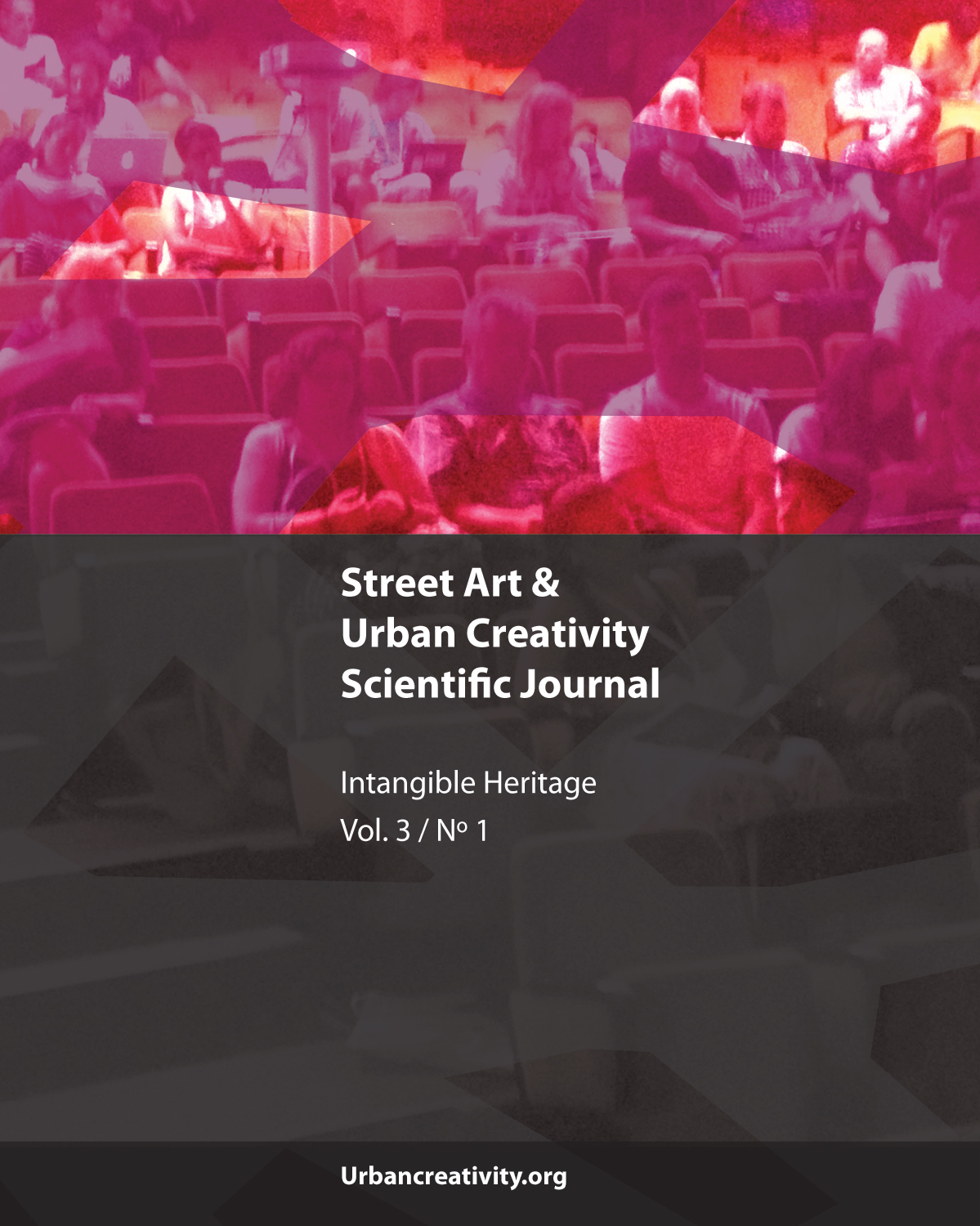The wall is dead, short live graffiti and street art!
Graffiti, street art and the Berlin Wall´s heritage
DOI:
https://doi.org/10.25765/sauc.v3i1.64Keywords:
Heritage, Berlin Wall, Graffiti, Street Art, Temporality, ContextAbstract
This article addresses some of the challenges faced by heritagization related to graffiti and street art, namely the changes in context and temporality that this process entails. In order to discuss these issues, I will frame the Berlin Wall as a paradigmatic case that presents a trajectory in time: I will follow the transition of the Wall from a deadly frontier to an obsolete structure and, finally, to a historic monument. I will argue that graffiti and street art are context-specific, and deeply affected by the symbolism and/or functions of the surface on which they are inscribed. Moreover, I will recognize graffiti and street art as practices situated in between tangible and intangible heritage. Particularly with the Berlin Wall, and in regard to the preservation of memory and heritage, I will suggest that graffiti and street art do not always enter the institutional circuit, especially when illegal and anonymous.
Downloads
Global Statistics ℹ️
|
246
Views
|
216
Downloads
|
|
462
Total
|
|
Downloads
Published
How to Cite
Issue
Section
License
Those authors who publish in this journal accept the following terms:
-
Authors retain copyright.
-
Authors transfer to the journal the right of first publication. The journal also owns the publishing rights.
-
All published contents are governed by an Attribution-NoDerivatives 4.0 International License.
Access the informative version and legal text of the license. By virtue of this, third parties are allowed to use what is published as long as they mention the authorship of the work and the first publication in this journal. If you transform the material, you may not distribute the modified work. -
Authors may make other independent and additional contractual arrangements for non-exclusive distribution of the version of the article published in this journal (e.g., inclusion in an institutional repository or publication in a book) as long as they clearly indicate that the work was first published in this journal.
- Authors are allowed and recommended to publish their work on the Internet (for example on institutional and personal websites), following the publication of, and referencing the journal, as this could lead to constructive exchanges and a more extensive and quick circulation of published works (see The Effect of Open Access).













